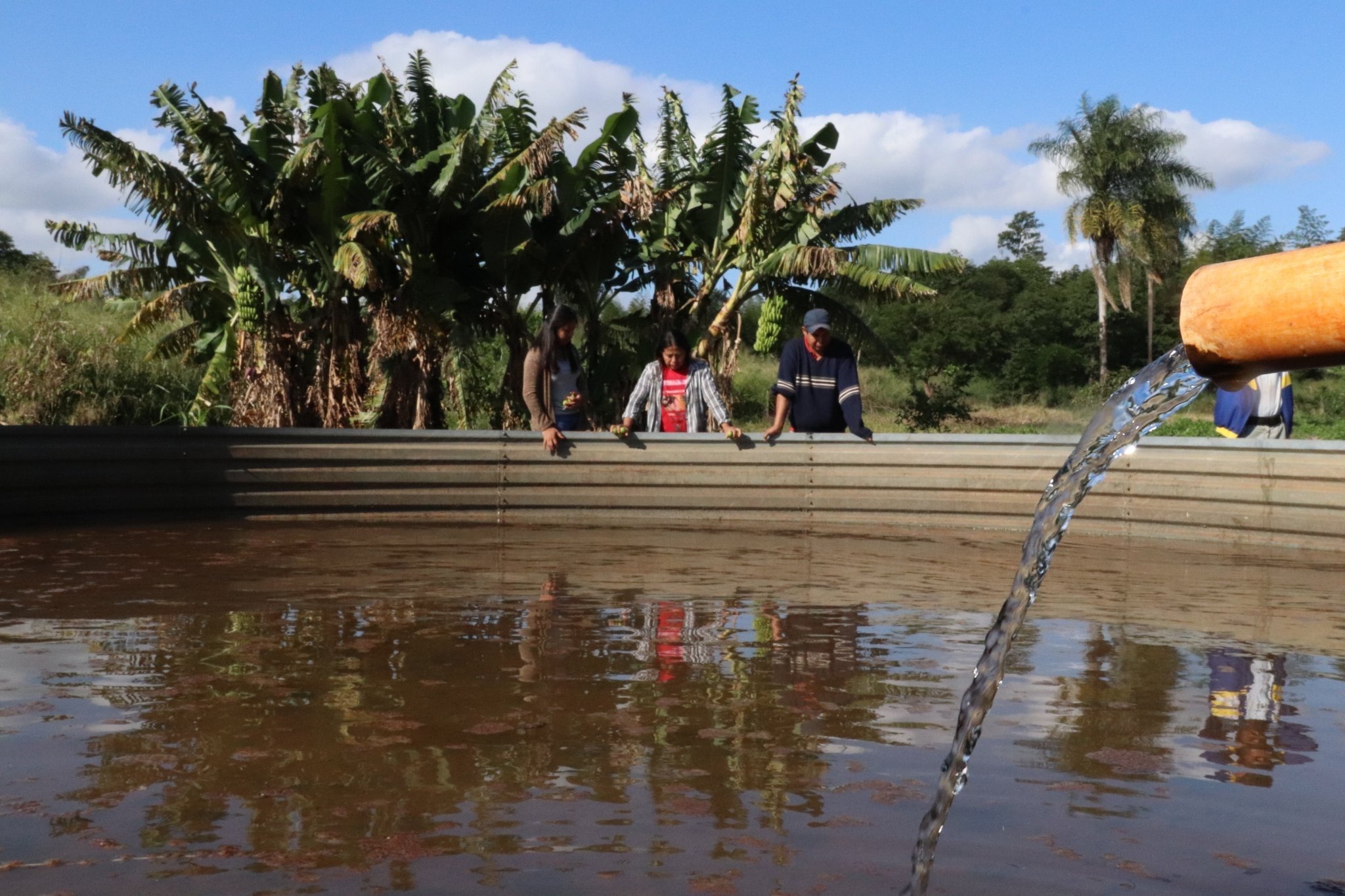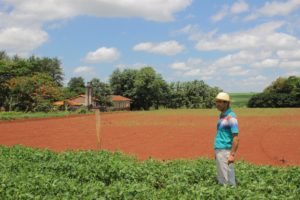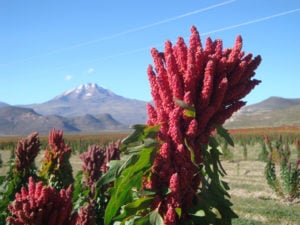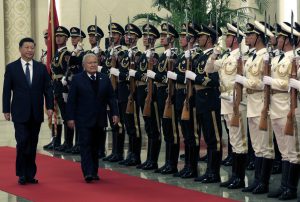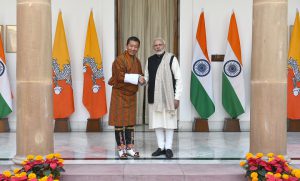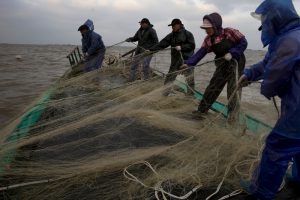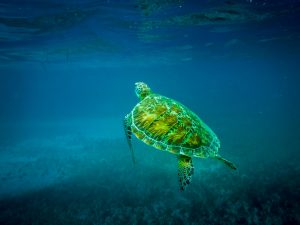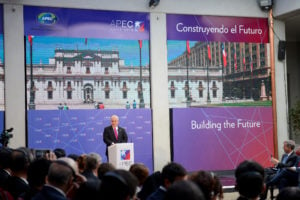Ka’a he’ê, which means ‘sweet grass’ in Guaraní, or Stevia Rebaudiana to give it its scientific name, has been part of Paraguay’s Pãi Tavyterã indigenous people’s lives for centuries. Today, it is produced on an industrial scale.
The Pãi Tavyterã were among the first to take advantage of stevia’s healing properties and sweetness. The herb is now traded worldwide and the community has long argued for compensation for something they consider their natural heritage.
Did you know…?
stevia extract is 300 times sweeter than sugar
Exports of stevia from Paraguay are growing rapidly. However, shipments to China, historically a principal export destination despite not having formal diplomatic relations with the landlocked South American country, have now fallen.
Domestic production cannot meet growing overseas demand and poor infrastructure and little state support for stevia cultivation compared to crops such as soy present big challenges.

Crop expansion
Stevia has expanded naturally in the department of Amambay, in the north-eastern region of Paraguay on the border with Brazil, where the Pãi Tavyterã live. Today, the plant grows only in a few areas.
We allowed them to enter our communities and they took the plants – but then we’re forgotten
According to the latest census of indigenous people in Paraguay, the Pãi Tavyterã number more than 15,494. They account for 13% of all indigenous groups in the country and are represented by several associations.
Pãi Rekove is one of them. Its representatives are somewhat closed off. They say the fear of being deceived by big businesses seeking to reproduce stevia, as happened in the past, compels them to protect it.
“The plant has already been reproduced in different varieties in other countries and is used by pharmaceutical and beverage companies,” the association said. “We claim compensation because it originates from this land.”
Nelson Benítez, a local teacher, is also wary.
“Since the world became interested, we’ve received lots of visits from people and organisations who promised to help us. We allowed them to enter our communities and they took the plants – but then we’re forgotten.”

According to Luis Lovera, who has researched the Guaraní’s historical association with stevia, the Pãi Tavyterã should receive some of the benefits enjoyed by industrial producers, since they first catalogued the plant’s qualities and varieties.
Lovera said the UN’s Convention on Biological Diversity (CBD) and the Nagoya Protocol include stipulations on genetic resources and the equitable sharing of benefits derived from use.
“The area in which stevia is endemic was always in the Pãi Tavyterã’s territory,” he says, adding; “The genetic reserve would be extinct if they did not preserve it in the territory they now occupy, which is scarce due to agricultural expansion.”
Industrially, stevia is used in dairy-based ice cream and frozen yogurt, iced tea, dressings and vinegars. It is also an ingredient in many soft drinks, food substitutes and other beverages, as well as cosmetics and dental products.
Companies such as Calbee Foods, The Coca-Cola Co, Groupe Danone, Nestlé, PepsiCo and Unilever are some of the companies that use stevia.
Traditional use
In Guaraní culture, stevia is a key ingredient in treating digestive problems and discomfort during menstrual cycles, members of the indigenous group say.
They also consume it as a tea and to sweeten beverages.
“When it’s ready to pick, we bring it in. We hardly use any sugar,” said Juana Recalde, representative of indigenous women of the Rekove Association.

Stevia also fights diabetes and regulates blood pressure and is five times more effective as an antioxidant than green tea, according to Rekove. The stem is also fed to animals and can be used as a fertilizer to revive degraded soils.
“The leaves are 30 times sweeter than sugar. Stevia extract is 300 times more so. It’s a natural, non-calorific sweetener,” wrote Paraguayan economics think-tank CADEP.
“It is used to replace saccharin, cyclamate and other artificial sweeteners. The plant contains several glycoside compounds that give it the natural sweet taste.”
Stevia’s use in new products has skyrocketed following World Health Organization (WHO) recommendations to reduce sugar consumption since it causes obesity, diabetes and dental problems.
31%
the growth in stevia consumption worldwide in 2018
Worldwide, the use of stevia increased by more than 31% in 2018, up from 11% in 2017, according to PureCircle, a producer of a stevia-based sweetener.
Production and challenges
As recently as 2006, Paraguay’s Ministry of Environment and Sustainable Development (MADES) considered stevia to be at risk of extinction, threatened by the expansion of soy, corn and livestock.
Small farmers still say producing the crop is a challenge. There is lack of transport and water infrastructure in producing areas and a lack of state support for growers, says Marcial Gómez, secretary of Paraguay’s National Peasant Federation.

“To have half a hectare with the necessary infrastructure – irrigation systems, tent coverage and partial shade – you need about 35 million guaraníes (US$5,636). For a small producer that’s a lot because there is no credit facility or technical support available from the government,” he says.
Nationally, the cultivated area covers 2,370 hectares, according to the Ministry of Agriculture and Livestock (MAG). The total average production capacity ranges from 3,900 to 4,000 tonnes of dried leaves per year.
Yet, to satisfy the global demand, Paraguay would need to plant approximately 12,000 hectares, according to CADEP.
In Paraguay, stevia covers a much smaller planted area than sugarcane, which covers 110,000 hectares and produces 6,160,000 tonnes.

According to the Investments and Exports Network (Rediex), an agency under the supervision of Paraguay’s Ministry of Industry and Commerce, stevia permanently employs seven people per hectare during its production cycle.
Looking abroad
Of all the stevia produced in Paraguay, 50% is exported, according to Juan Barboza, president of the Paraguayan Stevia Chamber.
“An awareness campaign is necessary for Paraguayans to consume more stevia,” he said.
Until last year, China was the largest importer of stevia leaves. China is also now the world’s top producer, with 18,133 hectares dedicated to cultivation.
However, with a number of Latin American countries establishing diplomatic ties with China over the past two years, Paraguay’s continued lack of a formal relationship meant that shipments decreased in 2018. No stevia has been exported to China this year, exporters said.
Paraguay sent its first batch of stevia – some 290,000 kilos – to China in 2012. Exports peaked in 2017 at 950,144 kilos. However, over the past year, the figure dropped to 74,313 kilos, according to Paraguay’s Central Bank.
The low export volume of Paraguayan stevia compared to soy, which reaches China via neighbouring countries, meant it went almost undetected. But as quantities increased, customs authorities started to notice, said Mariano Demaria of PureCircle.
The Paraguayan government’s strategy should be to open up trade with China
PureCircle’s plan to commercialise stevia involved cultivating the leaf in Paraguay and then shipping it to their Chinese factory for processing. It would then export 80% of production worldwide, Demaria said. But diplomatic issues interfered.
“The Minister of Foreign Affairs, Luis Castiglioni, should sit down and negotiate. As we receive all kinds of products from China, without any restrictions, he should ask for some reciprocity for the stevia exports,” he said, adding that this should help Paraguay’s trade deficit with China.
“The Paraguayan government’s strategy should be to open up trade with China,” he said.
